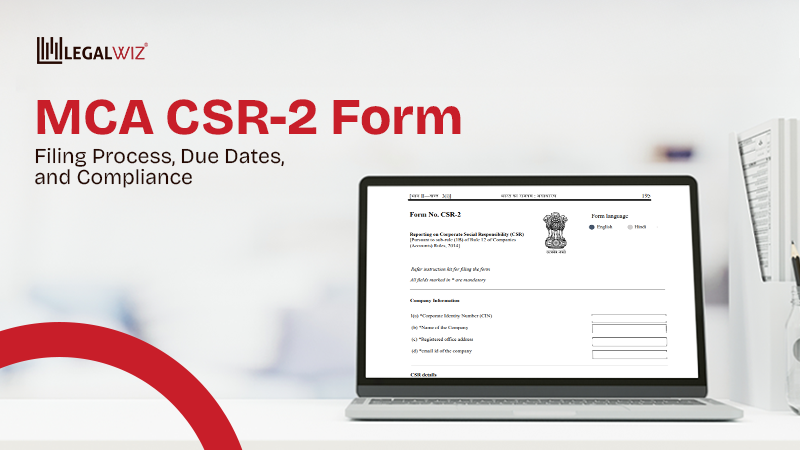Memorandum of Understanding – Its Need and Legal Status
Introduction
A Memorandum of Understanding (MoU) usually referred to as a ‘gentlemen’s agreement’ is a basic written agreement between two or more parties, who are desirous of entering into a combined project. MoU full form, Memorandum of Understanding itself suggests that the MoU is an agreement based on the mutual understanding of the parties. Hence, all the details of an MoU set out the mutually decided points of a business. Memorandum of understanding (MoU) agreements are not the same as the other legal agreements.
The MoU format is not necessarily legally binding on the parties to it. It is just a basic agreement, which confirms that the parties will imminently enter a legal business relationship. Today you can get a Memorandum of Understanding draft online in just a few clicks. But first, take a look at all the things you need to know about a valid MoU.
Meaning of Memorandum of Understanding (MoU)
A memorandum of understanding means a written agreement, which may or may not have legally binding effects. Most MoU drafts do not have a legally binding effect. The reason behind this being, the fact that the major purpose of MoU is to help in negotiating the terms of any business partnership or relationship. Even though an MoU is non – binding, it is important because it entails that a more comprehensive, legally binding agreement, will follow.
A Memorandum of Understanding can be of two types:
- Bi-lateral MoU – when only two parties are entering into a Memorandum of understanding for some specific purpose, it is a ‘bilateral MoU’; and
- Multilateral MoU – when more than two parties are entering into a memorandum of understanding it is a multilateral MoU. Multilateral MoUs usually come into the picture when international relations and treaties between various nations are concerned.
Need for MOU
When any parties are desirous of entering into any business relationship, the first thing they need to do is set all the terms and establish a mutual agreement. Memorandum of Understanding bridges that gap between the first discussion and final draft of a legal agreement. Usually parties prefer signing a memorandum of understanding before entering into a binding agreement because MOU’s are simpler, less complex and time consuming than a contract. Besides, two parties can enter an MOU before they decide the terms of actual business relationship. For example, an MOU can be a primary database for the creation of a franchise agreement. Memorandum of Understanding, being a formal Agreement involves less complexity hence making it a convenient alternative for the parties. An MOU is hence always preferred when the parties tend to avoid any legal implications before creating valid contracts.
These days, it is quite common for two or more business entities to enter into a joint venture agreement for certain projects and growth. Drafting a MOU between these parties first is advisable to ensure the accuracy of purpose and business terms.
Legal Status of MOU
A Memorandum of Understanding is an agreement, which becomes a valid contract only when it fulfills the criteria as per section 10 of the Indian Contract Act, 1872. The essentials of a legally binding contract are:
- Free consent of parties;
- Lawful consideration;
- Lawful purpose; and
- Expressly declared as non- void.
While considering the legal status of Memorandum of understanding the language and intent of the MoU plays a major role. If the language of the MoU agreement imposes duties on the parties, and the intent of the agreement seems like building a legal relationship, it becomes a legally binding MoU. Hence, a memorandum of understanding is legally binding when breach of MoU has similar consequences as that of a breach of contract.
Landmark Judgement on Validity of MoU
The Hon’ble SC in the very famous case of Jai Beverages Pvt. Ltd. v. State of Jammu and Kashmir and Ors, AIR 2006(4) SCJ 401 held that if an MOU is in a formal shape and if the parties benefit from acting in accordance with the terms listed out in the MOU, it can be considered as a legally binding agreement.
What is included in a Memorandum of understanding?
Since the major idea behind signing an MoU format is to set clear terms of a relationship, prior to entering into an agreement, it is very important to understand all inclusions of a MoU. Usually, the following contents are a part of a valid Memorandum of understanding:
- Details of parties (name, email ID, address etc);
- Description of the project the parties are about to enter;
- Scope of Work;
- Roles and Responsibilities of the parties;
- Confidentiality clause;
- Consideration terms; and lastly,
- Procedure for Dispute Resolution
Interested in various legal agreements and their impacts? Learn all about Rent Agreements here: Rent Agreement in India.
Difference Between MOU and Letter of Intent (LoI)
Usually, under the US laws, the memorandum of understanding (MoU) and Letter of Intent (LoI) are the same and can be considered interchangeably. However, the major point of difference is that an LOI is one party offering certain terms to the other. Whereas, MoU entails that there is a mutual understanding and agreement of all the signatories. MOUs are generally more open-ended than the LOIs.
Pros of signing a memorandum of understanding
Listed below are the pros of MoUs:
- Establishes clarity of terms between the parties;
- Acts as a blueprint to the main contract; and
- Lastly, there is no legal obligation on the parties.
MoU Drawbacks
Just the way all coins have two sides, MoUs too have their set of pros and cons. The following can be considered as cons of entering a memorandum of understanding (MoU) agreement:
- As it is not necessarily legally binding, huge part is dependent on personal trust between parties;
- If by any chance the terms to the proposed business relationship change after signing an MoU, many resources go to waste.
Conclusion
Memorandum of Understanding holds a particular power considering that it is an alternative to a legally binding agreement intending to establish a legal relationship amongst the parties. While drafting the Memorandum of Understanding, the failure to keep an eye on details such as the titles, language, and other clauses can result in a tremendous loss to the parties. What are you waiting for? Get on a call with LegalWiz.in experts and get your MoU draft online in just a few clicks!

Nischay Nagarwal
Nischay is a lawyer by profession, with substantial background in Contract Drafting & Vetting. She earned her B.Com LLB (Honours) from GNLU in 2015. Her day-to-day at LegalWiz.in remains to protect client interests by drafting, reviewing & advising on various contracts & legal documents.
2 Comments
Leave A Comment








एक बिल्डर प्रोजेक्ट में जमीन के मालिक समिति एवं एक बिल्डर के मध्य Memorandum of अंडरस्टैंडिंग हुआ था जिसे दोनों पक्षों ने केवल नोटरी अटेस्टेड करवाया इसे रजिस्टर्ड नहीं करवाया यह बहुत सारे लोगों के फ्लैट बुकिंग संबंधित मामला है एवं जनता की धनराशि से जुड़ा मामला है क्या इसे पंजीकृत करवाना अनिवार्य है या नहीं कृपया कर बताएं धन्यवाद
Hello Mr. Rajiv,
We acknowledge receipt of your query regarding the necessity of registering the Memorandum of Understanding (MoU) executed between the builder and the society, particularly in light of it having already been notarized.
Please be advised that while a notarized MoU may be considered as evidence of understanding between the parties, it does not carry the same legal weight as a registered document. A registered MoU is legally more robust and is directly admissible before a Court of Law, thereby offering stronger evidentiary value and enforceability.
Given that the matter pertains to financial interests of multiple individuals, it is strongly recommended to have the MoU duly registered. This will mitigate the risk of future disputes regarding its validity or enforceability and ensure greater legal security for all parties involved.
Should you require any assistance in this regard, please do not hesitate to contact us at 1800 313 4151